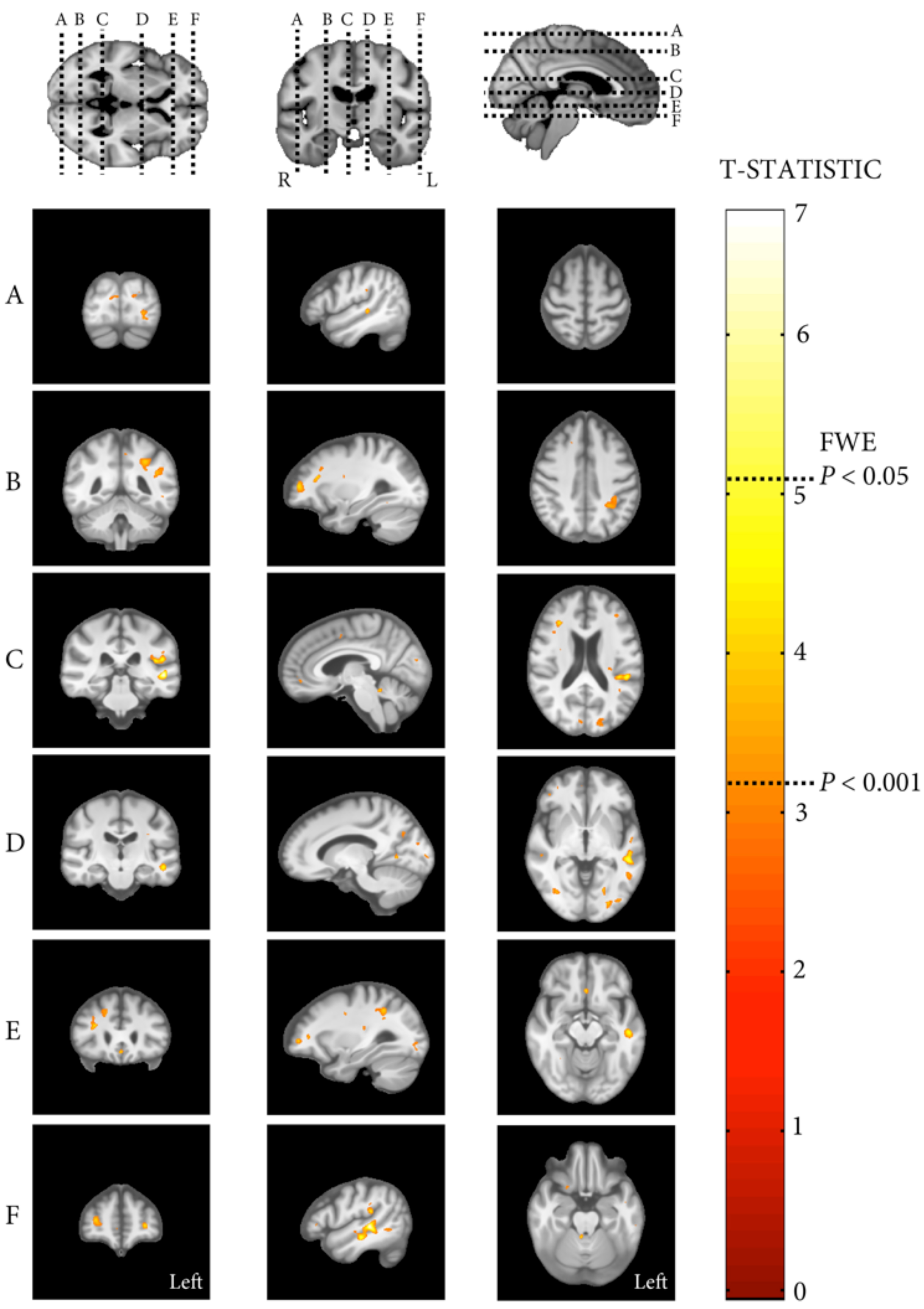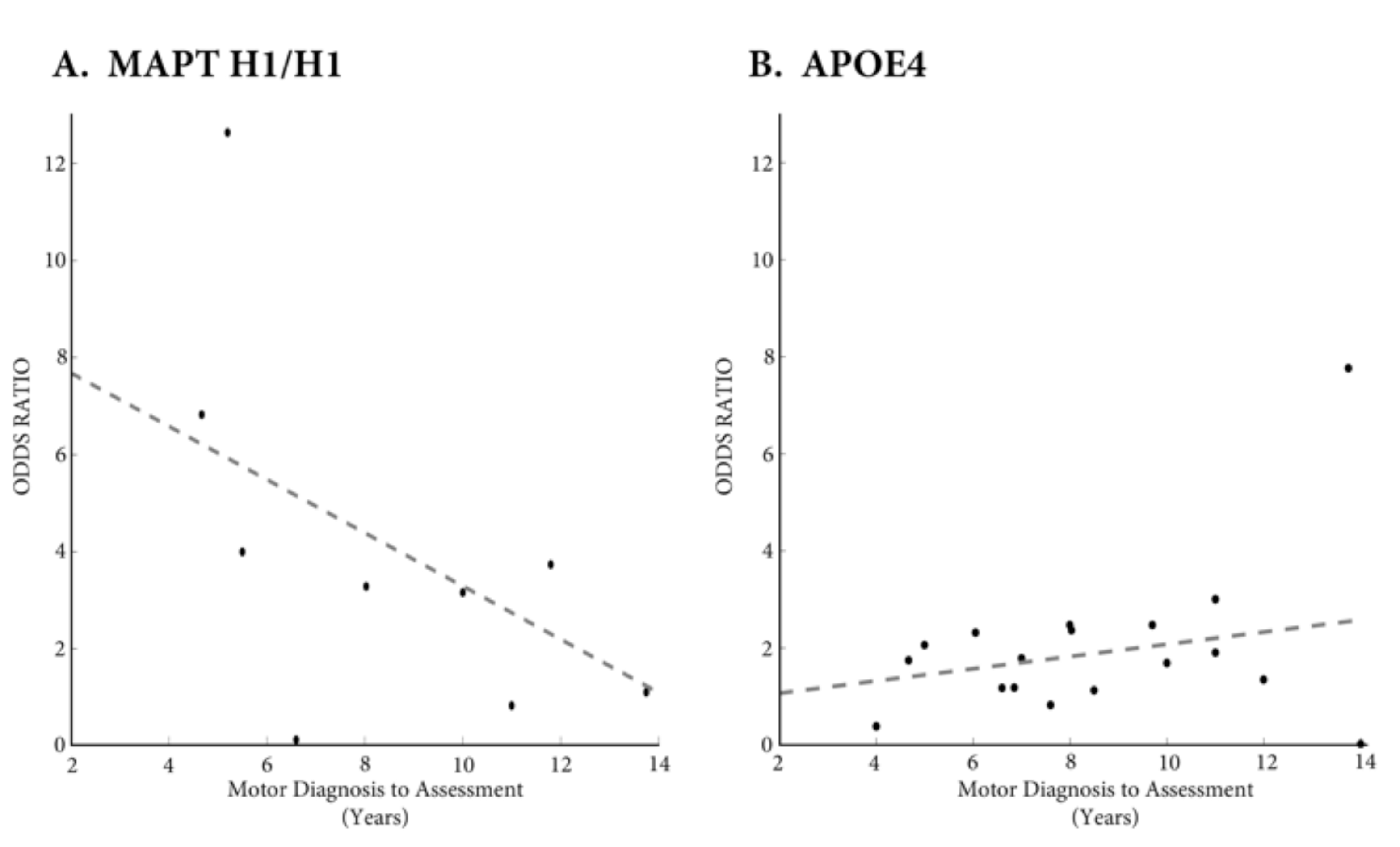Session Information
Date: Monday, October 8, 2018
Session Title: Parkinson's Disease: Genetics
Session Time: 1:15pm-2:45pm
Location: Hall 3FG
Objective: To define if the high risk MAPT allele of rs393152 (H1 haplotype) is associated with differences in brain structure, clinical presentation, progression or cognitive decline (mild cognitive impairment (PD-MCI) or dementia (PDD)) in recently diagnosed Parkinson’s disease (PD).
Background: Individuals who develop PDD often have Alzheimer’s (AD) pathology at post-mortem. Previously a region within the extended MAPT locus (rs393152) was identified as significant genetic overlap between AD and PD, and a dose dependent effect on hippocampal atrophy, worse in non-APOE4 carriers, demonstrated in an AD cohort (1). However, this has not been replicated in PD.
Methods: Data was downloaded from the PPMI (May 2017). Combined MAPT/APOE status was matched for 383 individuals with PD, and used to analyse clinical data. Baseline 3T MRI data was available for 213 of these subjects, and 83 had longitudinal data. All imaging data was rigidly aligned, and longitudinal data processed via “Serial Longitudinal Registration” in SPM12. All MRI data was segmented and used to generate a group average template. Voxel based morphometry and quantification was performed. Peak voxel Family Wise Error (FWE) corrected P < 0·05 was significant. A meta-analysis of the literature was also performed.
Results: Demographics and Clinical Measures No significant differences at Bonferroni corrected P < 0·001. Cognitive Impairment Clinical characteristics are summarised in table 1. There was a significant association between the high risk MAPT allele and PDD. The odds ratio associated with H1/H1 and PDD was 6·82 (CI = 0·87 - 53·40, P < 0·05). Once individuals with the APOE4 allele were removed, 100% of those who developed PDD carried MAPT H1/H1 allele. [table1] Neuroimaging: Baseline No significant differences (FWE P < 0·05). Neuroimaging: Longitudinal There was faster grey matter atrophy associated with the high risk MAPT between those without APOE4 compared to those with (Fig 1) [figure1] Meta-analysis: There was an inverse relationship between the MAPT H1/H1 odds ratio and disease duration at assessment (Fig 2). [figure2]
Conclusions: 1. MAPT H1/H1 is associated with an increased risk of early dementia in PD irrespective of APOE4 status. 2. There is evidence for an interaction between APOE4 and MAPT, with faster GM atrophy in those with MAPT H1/H1 who lack the APOE4 allele. 3. Previous studies may underestimate MAPT risk by recruiting too far from motor diagnosis.
References: 1. Desikan RS, Schork AJ, Wang Y, Witoelar A, Sharma M, McEvoy LK, et al. Genetic overlap between Alzheimer’s disease and Parkinson’s disease at the MAPT locus. 2015; 20: 1588–1595.
To cite this abstract in AMA style:
C. Lambert, Z. Ahmed, P. Ostergaard, L. Ricciardi, F. Morgante, T. Barrick, M. Edwards. Interaction between MAPT H1 and APOE4 in early Parkinson’s Disease [abstract]. Mov Disord. 2018; 33 (suppl 2). https://www.mdsabstracts.org/abstract/interaction-between-mapt-h1-and-apoe4-in-early-parkinsons-disease/. Accessed December 16, 2025.« Back to 2018 International Congress
MDS Abstracts - https://www.mdsabstracts.org/abstract/interaction-between-mapt-h1-and-apoe4-in-early-parkinsons-disease/



